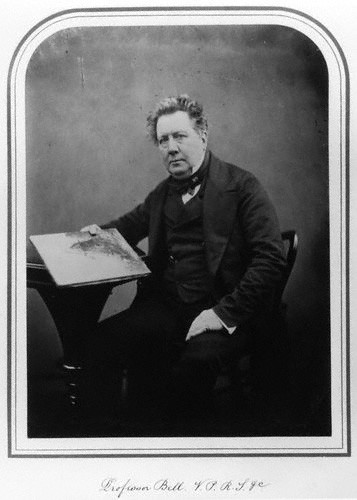You have n cubical building blocks. You try to arrange them into the largest possible solid cube, but you find that don’t have quite enough blocks: One side of the large cube has exactly one row too few.
Prove that n is divisible by 6.
You have n cubical building blocks. You try to arrange them into the largest possible solid cube, but you find that don’t have quite enough blocks: One side of the large cube has exactly one row too few.
Prove that n is divisible by 6.

“It’s odd how soon one comes to look on every minute as wasted that is given to earning one’s salary.” — P.G. Wodehouse
For Capricorn, Aquarius, Pisces, Aries, Taurus, Gemini, Cancer, Leo, Virgo, Libra, Scorpio, and Sagittarius:
The coming year is likely to present challenges; these trials are when your true character will show. Trusted friends can provide assistance in particularly pressing situations. Make use of the skills you have to compensate for ones you lack. Your reputation in the future depends on your honesty and integrity this year. Monetary investments will prove risky; inform yourself as much as possible. On the positive side, your chances of winning the lottery have never been greater!
(By Tim Harrod.)
This musical map, by Japanese artist Isao Hashimoto, presents all 2,053 nuclear tests and explosions that took place between 1945 and 1998, at a rate of one month per second. Each nation is represented by a different tone.
Hashimoto said, “I created this work for the means of an interface to the people who are yet to know of the extremely grave but present problem of the world.”
He undertook the work in 2003, so it doesn’t reflect North Korea’s tests in 2006 and 2009.
(Thanks, Larry.)
When PLAFSEP magazine asked its readers to nominate the silliest library subject heading, the hands-down winner was BUTTOCKS (IN RELIGION, FOLK-LORE, ETC.). Other highlights, gathered by columnist John R. Likins:
AMERICAN GIANT CHECKERED RABBIT
BANKRUPTCY–POPULAR WORKS
CATASTROPHICAL, THE, see also COMIC, THE
CHILD ABUSE–STUDY AND TEACHING
CONTANGO AND BACKWARDATION
DENTISTS IN ART
FANTASTIC TELEVISION PROGRAMS
FOOD, JUNK
GHOSTS–PICTORIAL WORKS
GOD–ADDRESSES, ESSAYS, LECTURES
HEMORRHOIDS–POPULAR WORKS
JESUS CHRIST–PERSON AND OFFICES
LABORATORY ANIMALS–CONGRESSES
LOVE NESTS–DIRECTORIES
MANURE HANDLING
MUD LUMPS
ODORS IN THE BIBLE
PRAYERS FOR ANIMALS
SICK–FAMILY RELATIONSHIPS
URINARY DIVERSIONS, see also URINE DANCE
WASPS (PERSONS)
That’s from Likins’ article “Subject Headings, Silly, American–20th Century–Complications and Sequelae–Addresses, Essays, Lectures,” in Technical Services Quarterly, vol. 2, no. 1/2, Fall/Winter 1984, using data from the Library of Congress and Cataloging in Publication. In The Library at Night (2006), Alberto Manguel gives these:
Banana research
Bat binding
Boots and shoes in art
Chickens in religion and folklore
Sewage: collected works
Sex: cause and determination
Tic: see also toc
And the Whole Library Handbook (1991) offers these, collected by the Library of Congress Professional Association:
Adult children
Beehives; see Bee–Housing
Diving for men
Drug abuse — Programmed instruction
Feet in the Bible
Hand — Surgery — Juvenile literature
Lord’s Supper — Reservation
Low German wit and humor
Monotone operators
Running races in rabbinical literature
Standing on one foot; see One-leg resting position
Stupidity; see Inefficiency, Intellectual
I think some of these may now be out of date, but there’s certainly no shortage of curious headings — in doing research for this site I recently ran across “Raccoon — Biography.”

On July 1, 1858, the Linnean Society of London heard a joint presentation by Charles Darwin and Alfred Russel Wallace on the theory of evolution by natural selection.
In his annual report the following May, society president Thomas Bell wrote, “The year which has passed has not, indeed, been marked by any of those striking discoveries which at once revolutionize, so to speak, the department of science on which they bear.”
In 1962, botanist Reid Moran published a note in the journal Madroño recounting his collection of a bush rue on a mountaintop in Baja California.
The note’s title was “Cneoridium dumosum (Nuttall) Hooker f. Collected March 26, 1960, at an Elevation of About 1450 Meters on Cerro Quemazón, 15 Miles South of Bahía de Los Angeles, Baja California, México, Apparently for a Southeastward Range Extension of Some 140 Miles.”
The text read, “I got it there then.”
This was followed by a 28-line acknowledgment section in which Moran thanked the person who had reviewed the text, his college professors, and the person who had mailed the manuscript.
A problem from the 2003 Moscow Mathematical Olympiad:
A store has three floors, which are connected only by an elevator. At night the store is empty, and during the workday:
(1) Of the customers who enter the elevator on the second floor, half go to the first floor and half to the third floor.
(2) The number of customers who get out the elevator on the third floor is less than 1/3 the total number of customers who get out of the elevator.
Which is greater, the number of customers who go from the first floor to the second on a given workday, or the number who go from the first floor to the third?

viduity
n. the state of being a widow